
The Differences Between Steak DryAging and WetAging SteakAger
Whichever method you choose, shoot for medium-rare or 130°F. Move the steaks to a lower heat and cook for another 4-5 minutes. Remove the steaks and let them rest for at least five minutes but as much as 10 minutes before enjoying. Dry-aged and wet-aged steaks are both worth a try. Both hold the wisdom and tenderness that come with time.

Dry Aging vs. Wet Aging Meat Guide Grill Baby Grill
For instance, wet-aged meat has a slightly metallic, fresh flavor because it is aged in its juices and blood. Because wet-aging usually lasts shorter than dry -aging the meat is less tender and doesn't have a slightly sour flavor like dry-aged meat. Dry-aged meat is aged longer than wet-aged meat which gives the enzymes more time to tenderize.

Difference Between Wet And Dry Aged Beef Beef Poster
Wet-aging. Wet-aged meat tastes much fresher and is more subtle in flavor when compared to dry-aged meat. However, because the meat experiences no open air, some describe the undertones of this flavor as slightly sour. However, both processes result in equally tender cuts despite these flavor differences.
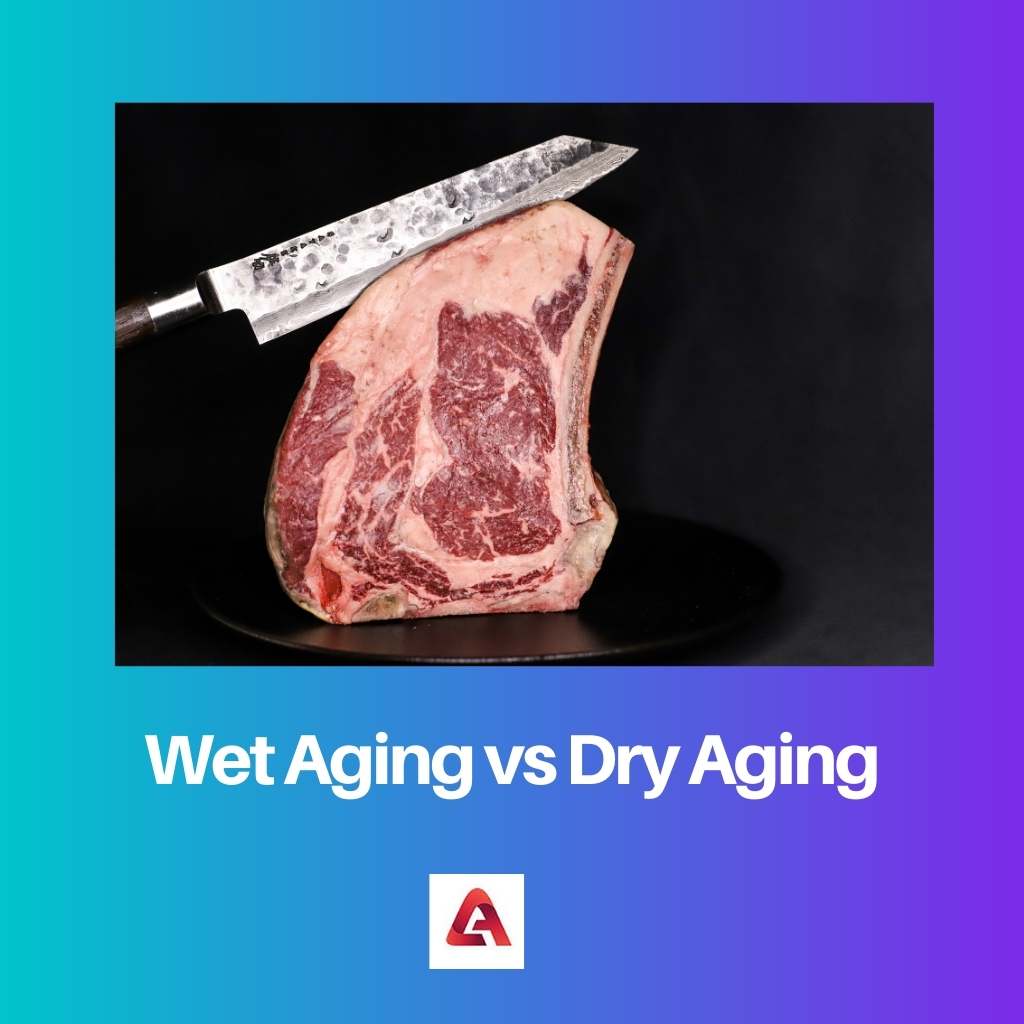
Natte veroudering versus droge veroudering verschil en vergelijking
Dry-aged beef is hung in the air to dehydrate at a temperature just above freezing for weeks, or up to months. The steak builds a thick, moldy coat that's cut away before cooking. High-end.
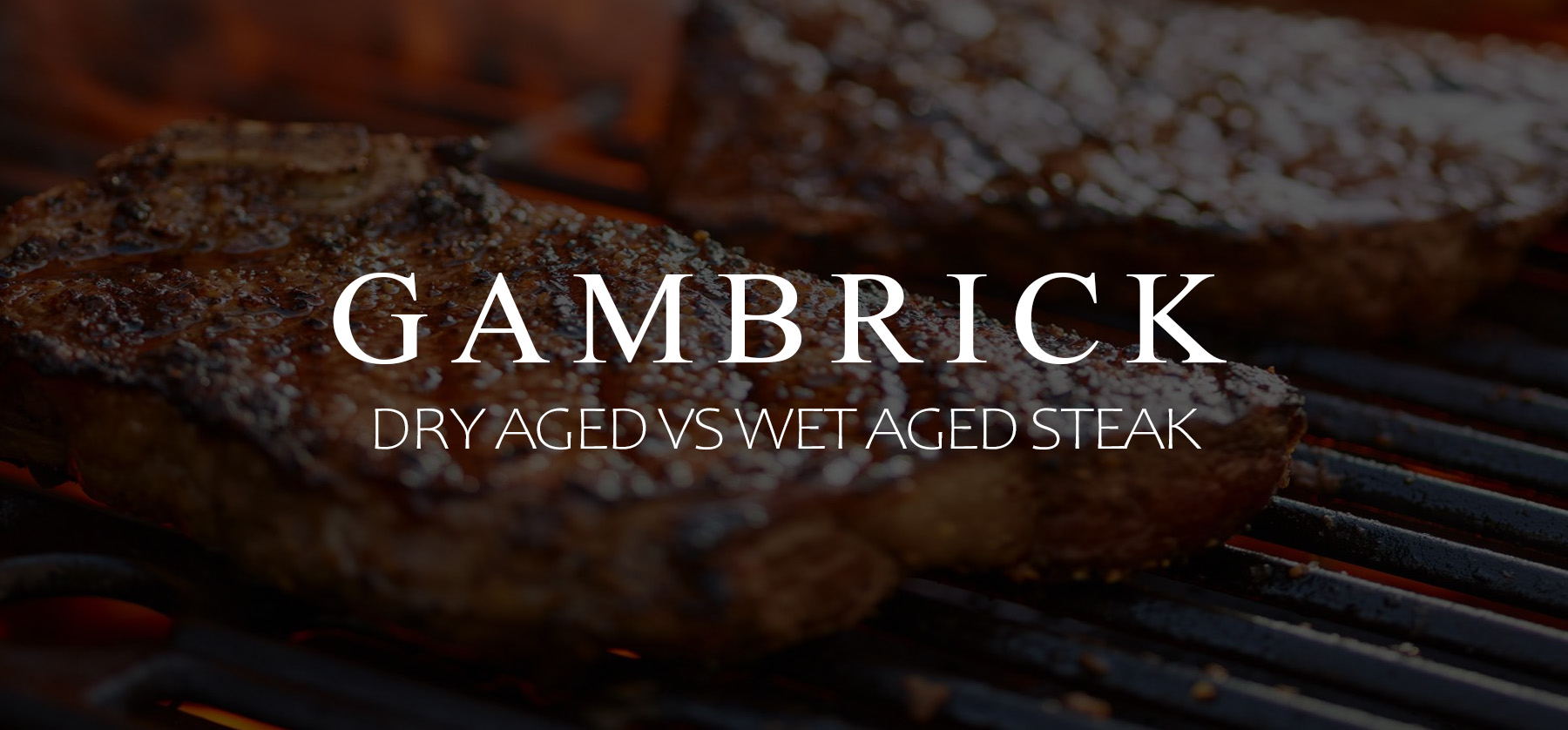
Dry Aged Vs Wet Aged Steak
Dry Aging vs. Wet Aging In the world of steak, the aging process is a critical determinant of taste, tenderness, and overall dining experience. Two primary methods of aging meat, dry aging, and wet aging, offer distinct approaches to achieving these desired attributes.
:max_bytes(150000):strip_icc()/how-dry-amd-becomes-wet-amd-4770108_v2-4e8bdd9d3c874c63a1a852bde87b7c6d.png)
How Dry AMD Wet AMD
Dry-aged beef delivers a different experience altogether. Because the enzymes have been allowed to do their work, these steaks are very tender. The aroma tends to be more pungent, often with notes of buttered popcorn. The flavor of dry-aged steaks is more concentrated than wet-aged meat, and it gets stronger the longer it is aged. Steaks that.

What’s the Difference? DryAging vs. WetAging Beef Wet aged beef
Wet-aged meat, being milder and more consistent with the taste and texture of standard beef, tends to be more widely accepted. In summary, the choice between dry aging and wet aging depends on personal preference. Dry aging offers a more intense flavor and a unique texture, ideal for those who seek a gourmet experience.
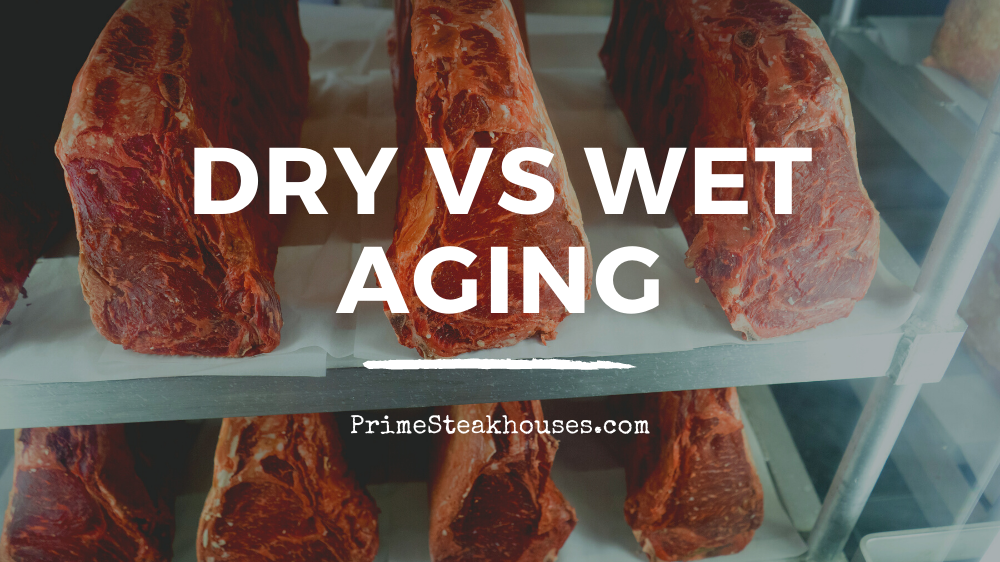
Dry vs Wet Aging Steak Aging Processes Key Differences, Pros & Cons
Dry aging, on the other hand, allows the meat to breathe, lose water (which increases its "beefiness" since there is now less water and but the same amount of muscle fiber), and get acted upon by.

Meat Processor Dry aging vs Wet Aging YouTube
Both steaks see an increase in tenderness. Dry aging breaks down connective tissues while wet aging allows the meat's natural enzymes to break down muscle fibers and increase tenderness. Try Home Chef - Family Meals Made Easy. 4-serving meals starting at $3.77 per serving (up to 25% cheaper than HelloFresh).

Dry Aging vs. Wet Aging la Frollatura della Carne Carne Genuina
Dry aging causes meat to lose some of its moisture content, typically reducing levels from around 75% to 70% moisture. This gives dry-aged meat its "beefier", richer flavor. The longer the meat is dry-aged the more tender it will be, with a stronger flavor. However, dry-aging meat also reduces its volume.

wet nerds Photo
Dry aging involves hanging the meat in a controlled environment to intensify its flavor, while wet aging retains moisture and results in a milder taste. Dry - aged steak has a nutty and rich flavor, but it is expensive and not suitable for all cuts of beef. Wet - aged steak is more affordable, juicier, and has a fresher flavor profile.
:max_bytes(150000):strip_icc()/dry-aging-beef-331496_FINAL-12c5aae3a0ea4714a27d7911b77ae345.png)
How to Dry Age and Wet Age a Great Steak
Dry aged steak produces a flavor profile that's distinct from its wet aged counterpart. The dry aged flavors tend to have a depth and complexity that's a pleasure unlike any other for steak enthusiasts. Wet aged steak, on the other hand, retains a more traditional steak flavor. The meat is tender, juicy, and has a classic flavor that most are.
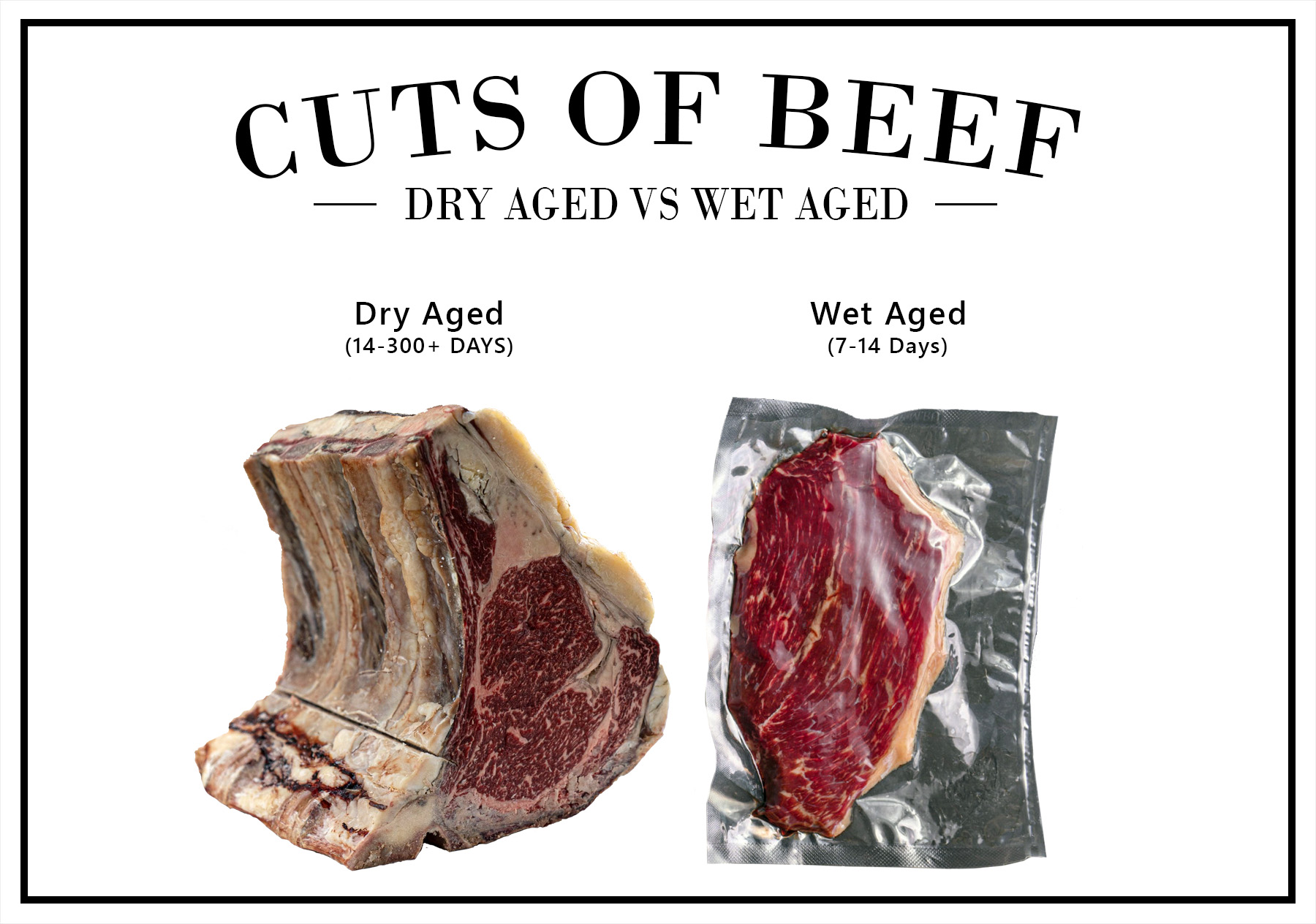
Dry Aged Vs Wet Aged Steak
Whether dry-aged or wet-aged beef is better has actually become quite a debate in certain foodie circles. Dry-aging has centuries of tradition on its side, while wet-aging is really the new kid on the block. Is one really better than the other? You decide.All meat benefits from some amount of aging before being sold and consumed. In the days after slaughter, enzymes go to work on the muscle.

Discover the Difference Between WetAged and DryAged Wagyu Beef The
Dry aging occurs in a controlled, open-air space, while wet aging sees a cut of beef vacuum sealed in its own juices. The first produces beef that's nutty, earthy, and robust. The second intensifies the beef's natural flavors and aromas. In this guide, we'll discuss how beef is aged, the differences in taste and preparation between wet and.

Wetaging vs. Dryaging YouTube
Shifting to the logistical side of beef aging, wet aging is much more cost-effective, faster, and easier to do on a mass scale. Because the beef is aging as it is en route to its distribution outlet, the whole process can move much faster than the dry-aging process. From a productivity standpoint, wet aging could likely be considered better.
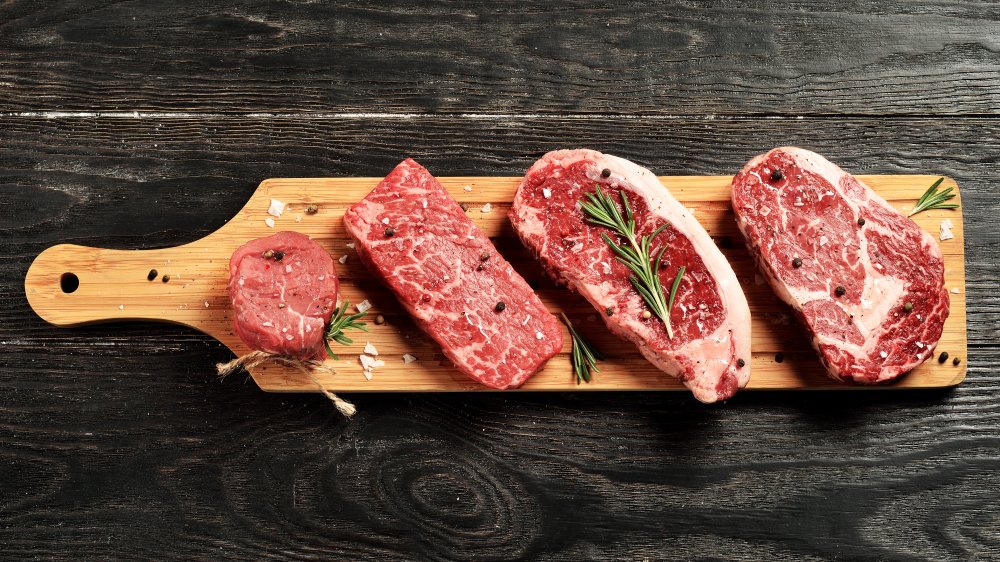
Here's The Real Difference Between Wet Aging And Dry Aging
With wet aging, the meat incurs no moisture loss, and therefore no reduction in size. However, it will not develop flavor like a dry-aged steak, though, again, some people prefer the subtler taste. These two aging techniques are suited to different meat cuts. Dry aging is best for fatty cuts like ribeyes, T-bones, and strip steaks, as during.